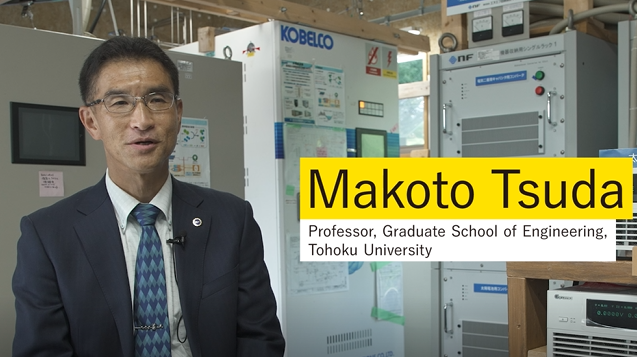In the Tohoku region pacific coast earthquake in March 2011, it was hard to maintain the function of the major water purification plants in Sendai city because the power outage continued for 4 days and securing fossil fuels became difficult due to the damage of oil reserve base and logistics shutdown. In these water purification plants, private power generators using light oil and kerosene were used as emergency power supplies. It is, however, difficult to secure fossil fuels that need transportation when a large-scale natural disaster occurs. Therefore, it is necessary to install a large capacity tank and stock fossil fuel in order to cope with a long-term power outage. However, since the private generators for emergency power supplies are not used except for emergencies, the degraded fossil fuel easily leads to malfunctions in emergencies. For this reason, it is necessary to replace the fossil fuel regularly. However, as the fossil fuel tank becomes larger, it is not easy to judge the fuel replacement timing and to consume and refill a large amount of the fossil fuel. Moreover, considering the need to reduce CO2 emissions and the rise of fossil fuel cost in the near future, it is necessary to construct a large-capacity emergency power supply that does not depend on fossil fuels. On the other hand, in case of long-term power outage due to a large-scale natural disaster, even a small amount of energy becomes very valuable, and solar power generation contributed greatly in terms of energy security during the Tohoku region pacific coast earthquake. For this reason, installing photovoltaic power generators at more than 60,000 designated emergency evacuation places throughout Japan is effective against future large-scale natural disasters. However, in order to make effective use of the photovoltaic power generation even in emergency, it is necessary to compensate for fluctuations in photovoltaic power output, and an energy storage device/system is indispensable for this. Based on the above, we have devised a “Hybrid Energy Storage System Composed of Electric and Hydrogen Energy Storage Systems” as shown in Fig. 1, which combines an electric power storage device and a hydrogen storage system. In order to demonstrate that the proposed system can supply high quality and high stability power as an emergency power supply for a long period of time and that highly accurate fluctuation compensation using this system enables effective use of renewable energy, a demonstration system of 20 kW as shown in Fig. 2 was constructed at Moniwa water purification plant in Sendai City to carry out the verification test.



